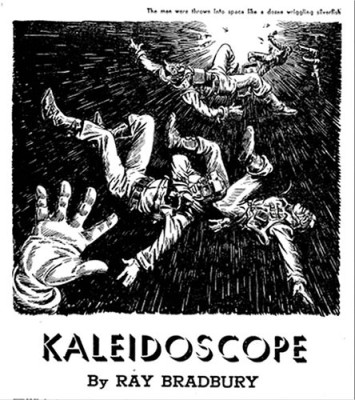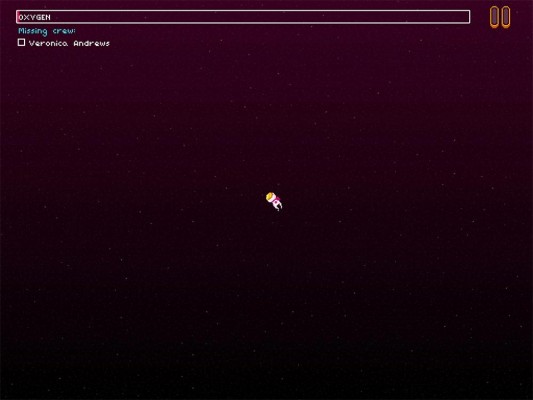Making Games Inclusive
This is a mildly-edited transcript from a talk I gave at the Sweden Games Conference in October, 2016. The conference’s theme was making the game industry a more inclusive space. I’m guessing they invited me based on this post I made roughly a year earlier. In any event, I used the opportunity to share some of my thoughts on the problems getting in the way of videogames and the game industry being more inclusive, and some ideas on the ways individuals can move things in that direction. One last note: some of the solutions are borrowed from Colleen Macklin and I’s 2013 Game Developers Conference Education Summit talk.
As powerful a cultural and media force as games, particularly videogames, have become, there are some real problems to contend with. One of them is inclusiveness. It’s the theme of the conference, and has already been a topic of every session so far, and will be in others still to come. I’d like to look at some of the reasons I think videogames and the game industry have an inclusiveness problem.
Videogame fundamentalism.
We tend to have a very specific and limited view of what constitutes a videogame. Winning, systems-driven, emphasis on player choice and the outcomes of those choices, and so on. We see games as being about mastery, and winning, and depth of experience, something we can return to again and again for something familiar yet new. We see games as being able to tell only certain kinds of stories, and to represent a limited sets of worlds—wizards, space marines, sports stars and cartoon characters represent the largest proportion.
These lead to a fundamentalist point of view about games, not so different than religious extremism of say, the Roman Catholic Church or American pentecostal beliefs. Too often it seems there is a right way, and a wrong way for games. Even more, there is a complete disregard for any perspectives, developers and games that don’t adhere to the standards of the moment.
But let’s be clear: most of this is really a matter of taste. Personal taste borne from industry and cultural standards. There’s nothing set in stone or “right” about any of these opinions, despite the degree to which they pervade the industry and game player conversation alike.
Videogame consumerism.
Part of this fundamentalism stems from thinking of videogames as media products. At its worst, videogame consumerism is like opera culture gone darkly mad—a once vital, popular form turned inward and esoteric, fueled by a rabid fringe fan base. Think no further than the absolutely baroque game controllers associated with PlayStation and Xbox consoles. Not to mention the finicky nature of first person move and look control schemes. And again to the limited set of worlds and themes and activities that we can do in games.
When we treat games like products, they become just another widget to sell and buy, and not a place for culture.
Videogame quantification.
A big part of this consumerism is the over-emphasis on quantification. We want the fastest, the highest resolution, the most responsive interfaces, the newest game. But we also think of games in a very information-age, quantification-based manner. Everything can be measured and assessed. Which ties back to the fundamentalist beliefs in systems-driven games where more attention is paid to the math than to the emotions.
Videogame exceptionalism.
Over the last 10 years, we’ve seen a rise in the belief that there is something different and unique about videogames as a medium. Somehow, we think the 6,000 + years of games and play that preceded Pong aren’t connected to games. But just because we added screens to the mix doesn’t mean that we can see videogames as the most important (or only) form of play. To forget this rich history of games and play is to further fall into the consumerism trap.
Videogame isolationism.
All of this leads to an unhealthy isolationism. This applies to how and when and where they are played, but also in that they don’t make inroads to connect outside of limited subcultures. Games are obsessed with games. We seem to love nothing more than a game with references and homages to other games. The connection to other mediums and artforms? Almost non-existent, unless you look to televised sports and their relationship with sports simulations.
Videogame homogeneity.
There is a lot of homogeneity with games: the kinds of games we make, the kinds of games we play, the kinds of people for whom games are designed, the kinds of people who make games, the walks of life from which the players and gamemakers emerge. All of which leads to a vast sea of vanilla sameness. Worse, it creates the perception and reality that if you aren’t a white male with a background in computer science and/or industry experience, you aren’t welcome here.
Videogames are exclusionary.
These things have consequences, among them are videogames keep people away that don’t want the standard play experiences. Videogames keep away people who aren’t willing or interested in delving into the esoteric minutiae. Videogames keep away people that don’t want to make the kinds of games they see already out there. Videogames keep away people that don’t have the same skill sets or interests in developing those skill sets. Videogames keep away people that don’t look or act like game players and gamemakers.
WHAT TO DO?
So what can we do about all of this?
Let’s walk back through each and see ways to counter-act these problems. Thinking about this from the perspective of individuals, and how we can enact a more inclusive game culture. Many of you are young, early in your careers. This is exciting for me, as you all are in a position to make a difference.
Videogame fundamentalism openness.
Instead of assuming we know what does and doesn’t qualify as a game, lets assume that if someone calls their work a game, it is a game. And that if a player considers an experience a game, they are right. Just as important, ask how something can be seen as a game, or producing play, instead of considering the ways it fails to meet pre-existing criteria. This means we have to approach experiences with an open mind, considering play rather than game.
All to say: be open to other points of view.
Videogame consumerism culture.
Instead of adopting an entitled consumer mindset around games, let’s treat games like a vibrant part of culture. This means a few things, like holding ourselves accountable for how our communities engage around games. It means being constructively critical about games. We tend to cheerlead for games, and gloss over the problems with the medium and its culture.
If we really respect games, we’re going to have to open up and be vocally critical, even when it might be uncomfortable, and even when it might hurt feelings.
Videogame quantification aesthetics.
Perhaps not the opposite of quantification, but part of the issue here is getting past numeric or quantitative analysis, and into qualitative analysis. So instead of being concerned with the number of hours a game takes to play, or the realism of its graphics, let’s think about how that game makes players feel, the emotions it brings to the surface, the ideas it explores.
That’s what aesthetics does, at its best: provides perspectives for seeing art in new ways, to probing deeper into the experiences art provides rather than counting up what it is.
Videogame exceptionalism omnivores.
Instead of thinking games are unique, we should focus on how they are similar to other mediums. We should be thinking about games in the context of other mediums. We can learn a lot from literature, painting, sculpture, architecture, comics, film, fashion, graphic design, dance, even food.
To think that our worldview should be constrained to computer science, videogames and a little process borrowed from product design is to severely curtail what we can learn from.
Videogame Isolationism connecting.
We should be thinking of games as part of the larger cultural conversation, and not as an isolated medium. Let’s connect games to everything we can. Let’s be open to new play experiences, to considering things we might not as games. Let’s be open to the influence of other fields and mediums.
Videogame homogeneity diversity.
We need to think beyond genres and trends (both clear signs we’re thinking as cultural products and not artistic culture), and think instead in terms of the kinds of play we create potentials for. We need to seek ways to diversify the people who make, play and critique games — more women, more cultural backgrounds, more points of view. More people from educational and professional backgrounds different than our own.
The more diversity we have in games—both players and gamemakers alike—the more potential there is for this medium to grow and mature.
Videogames are exclusionary embracing.
Let’s embrace the broader possibilities of the medium of games. Let’s not assume what games are is a closed topic. Let’s not assume the best people are already here making games. Let’s not assume that we know the right skill sets to create games.
All to say: Let’s be open to the possibilities of a maturing medium.
THINK GLOBALLY, ACT LOCALLY.
None of these suggestions are on the scale of “overthrow the hegemony” though that is certainly an option, however unlikely it is. Instead, they are based on the old activist saying of think globally, act locally. In other words, what are things we can do as individuals in ways that are within reach?
A few more concrete pointers on making games more inclusive.
Find play in everything.
How about beyond games: Music? Art? Books? Films? Dance? It is crucial that we move beyond a game-centered approach. Connecting to the play in everything is an important step in this process. We can model it for one another through our own actions, and how we ask them to approach play and their play experience. One of our roles as game design educators and students is to make the play visible in culture, and not just games. We may not see the play in other fields such as art, but it’s there.
Explore new ways of making.
We should see there are many ways to make play and games. Learn how other game-makers work. You’ll be surprised how different it can be. Connect with other making communities, share ideas and work with other design disciplines on game-based projects. Learn the iterative methods of other fields, and by utilizing those methods, they help us innovate our own. Learn the research methods of other fields.
The more we open ourselves to other kinds of making, the more paths we will see for making better games and play experiences.
Make for people not markets.
Let’s focus on what the game lets people do, instead of focusing on what the game market is. Not how it will be marketed and sold, but on the kind of experience it will provide. Product-driven thinking leads to an over-emphasis on genre, and micro-innovations that don’t advance games in the diverse ways it should.
The more we design with people in mind, the more likely we are to produce games for a more diverse population.
Connect games to life.
Ultimately, all of this leads to one point: Connect games to life. This is the bottom line really. We have gone so far down the rabbit hole of games as a product, of a hyper-formalist and market-driven consideration of games that we’ve lost sight of a fact some 6,000 years old. Games are part of culture. Games create culture. The context and ecology for games are not a given. They’re created by us. For all kinds of people. In our work as gamemakers, the more we can help people realize how important play is to life, and that games are the medium of play, the better off we’ll be.
The more diverse we can make gamemakers and game players, the better off we’ll be.















